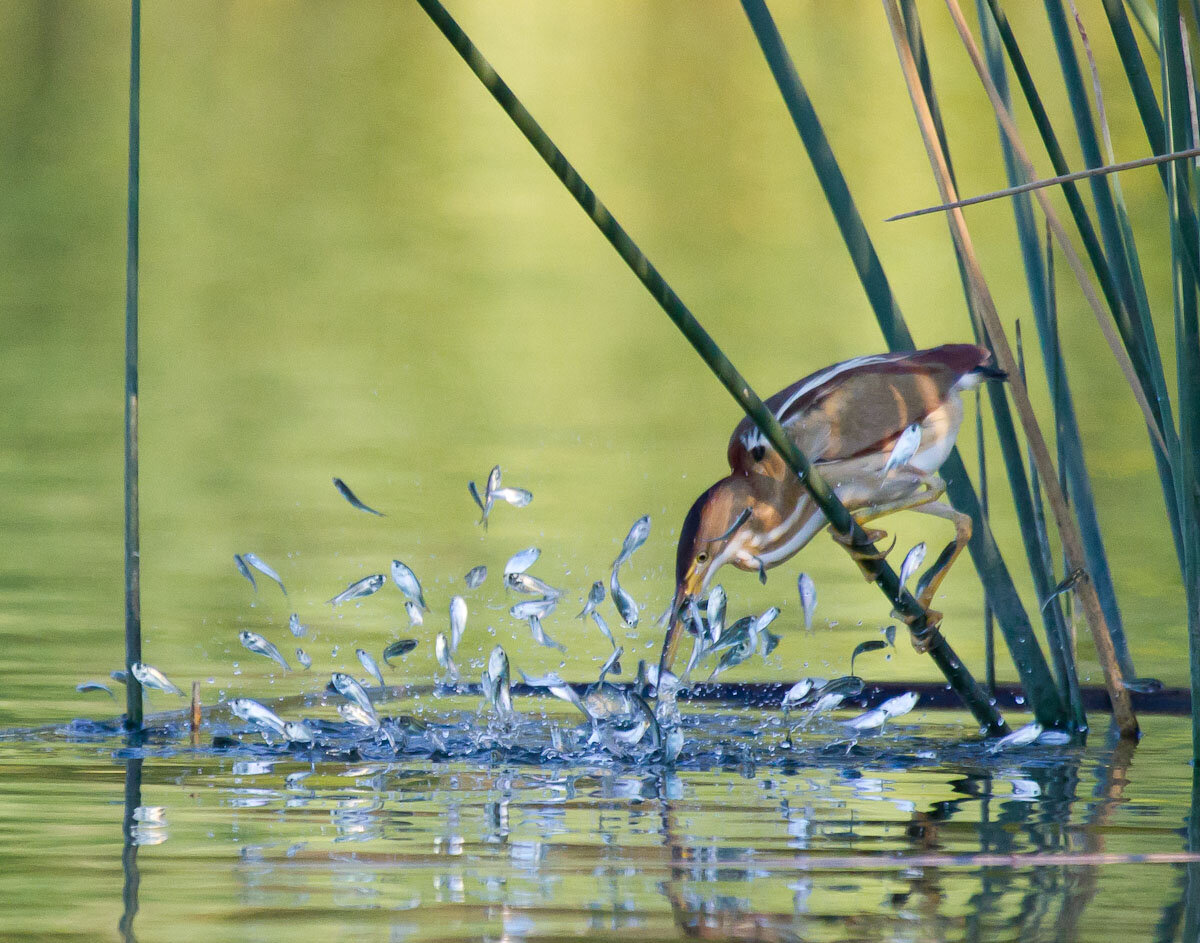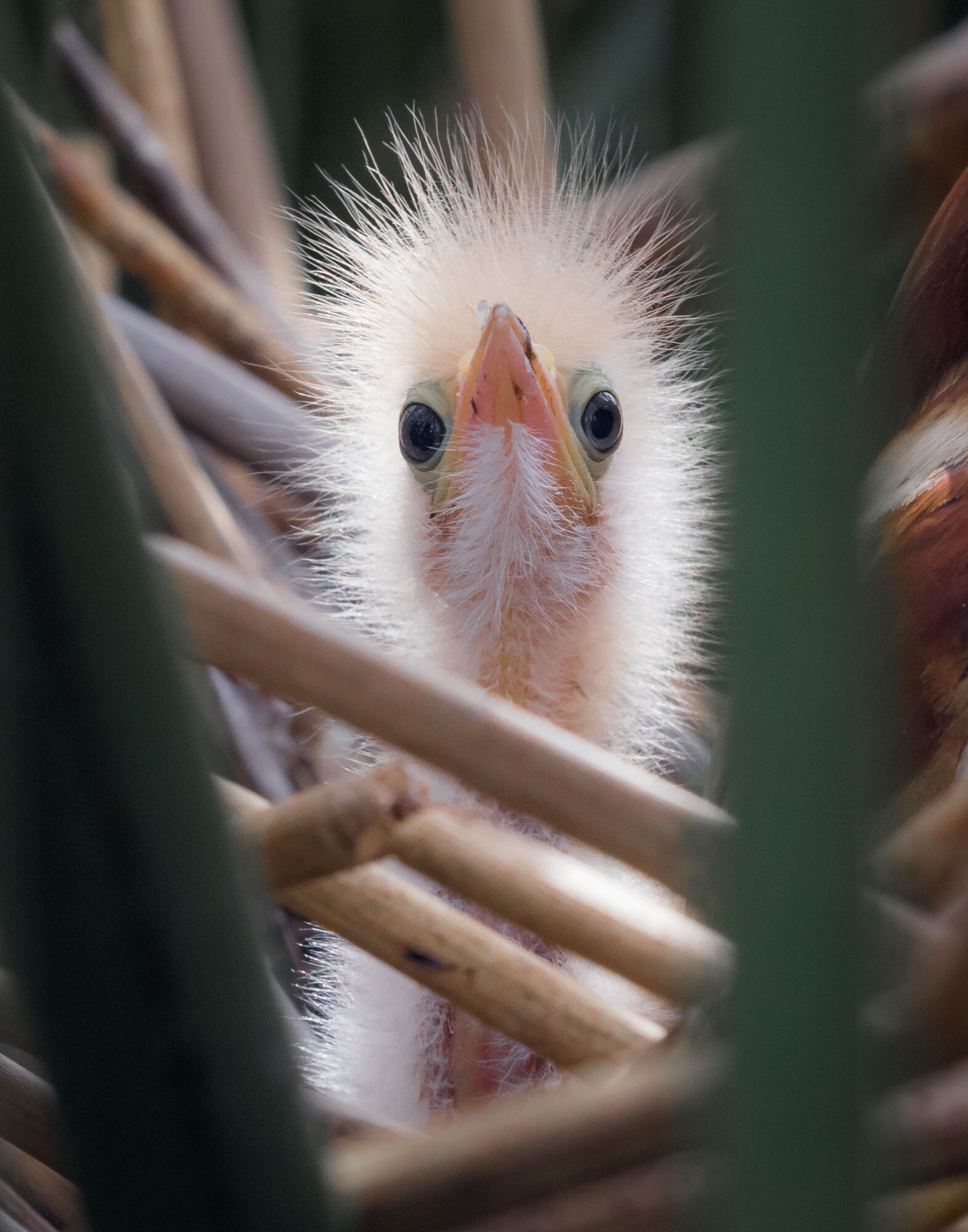Avian Acrobats
Written by Mark Kramer
Least Bittern (Ixobrychus exilis) | Photo by Gary Seloff
Green Heron (Butorides virescens) | Photo by Gary Seloff
Most members of the heron family are long-legged birds which spend much of the day wading in the shallows pursuing their next meal. There are two notable exceptions to the family of wade-feeding birds which prefer to keep their feet dry. These are the smallest members of the heron family and when performing, display a visual show for those who appreciate a natural spectacle. Just as Olympic gymnasts are small in stature, so too are these elite avian athletes. Grace, speed, balance, and strength characterize these marvels of the marsh.
Armand Bayou remains unchannelized and has benefited from decades of ecological restoration | Photo by Mark Kramer
Armand Bayou is unusual in the Bayou City in that it is one of the only bayous that has never been channelized. This process of straightening, widening, and deepening the stream bed has been employed for decades in the Houston area in an effort to minimize flooding. Unfortunately, the channelization process also creates a number of negative environmental impacts. The channelized bayou has been deepened with an abrupt drop-off from the water’s edge. The dredging of this shallow water margin also means no marsh occurs along the bayou edge. The channelized bayou has also been cleared of adjacent trees and shrubs in an effort to improve water flow rates during flood events. As we’ll see, these two species have critical habitat requirements which include emergent marsh and dense forest adjacent to the bayou, making the waters of Armand Bayou ideal.
In addition to Armand Bayou retaining its historic stream bed and meandering serpentine path, there has been extensive restoration of tidal marsh. More than 26 acres of tidal marsh habitat has been replanted since 1995. For several decades, the ABNC Native Plant Nursery Ponds cultivated California Bulrush (Schoenoplectus californicus). This plant material was used for restoration throughout the bayou. Bulrush marshes are important feeding and nesting habitat for the Least Bittern.
Yaktographer in his preferred habitat | Photo by Gary Seloff
These species show only glimpses of their true abilities. Even for someone who has spent a lifetime admiring bayou fauna, getting a good look at these secretive hunters is rare. Their extreme maneuvers take place at lightning speed and are difficult for the naked eye to process or appreciate. I have said many times that the lens and artistry of Gary Seloff reveals images of wildlife behavior impossible to witness by any other means. These are among the species rarely seen, but now are captured on our photographic safari in close up freeze fame for your viewing pleasure.
Least Bitterns are the smallest member of the heron family. They occur primarily in the restored California Bulrush marshes of Armand Bayou, April through October | Photo by Gary Seloff
ABNC developed an innovative technique for cultivating and planting California Bulrush. Least Bitterns did not occur on Armand Bayou before California Bulrush marsh was restored | Photo by Ann Brinly
Least Bitterns have feet specially adapted to walk from stem to stem in the Bulrush marsh and never get their toes wet | Photo by Ann Brinly
Fishing is easy in the food-rich waters of summer. Schools of Gulf Menhaden ride the tides, drifting past hungry mouths | Photo by Gary Seloff
California Bulrush also provides excellent nesting habitat | Photo by Gary Seloff
This parent keeps watchful eye on any who venture too close | Photo by Gary Seloff
Dad is bringing home the groceries to the Bittern family | Photo by Gary Seloff
Green Herons are year-round residents on Armand Bayou | Photo by Gary Seloff
They are typically found stalking through dense brush and vegetation along the bayou’s edge. These opportunistic predators are fast and agile. At first glance, the bird appears drab and camouflaged, but a closer view with good optics reveals hues that are both subtle and striking. | Photo by Gary Seloff
No other heron possesses the extreme athleticism of the Green Heron | Photo by Gary Seloff
No other heron possesses the extreme athleticism of the Green Heron | Photo by Gary Seloff
Tree limbs overhanging the protected waters of Horsepen Bayou offer prime Green Heron nest sites. These hatchlings hope mom is delivering dinner soon. | Photo by Gary Seloff
Birders on the Bayou Ranger enjoy a close viewing of a Least Bittern | Photo by Mark Kramer

















